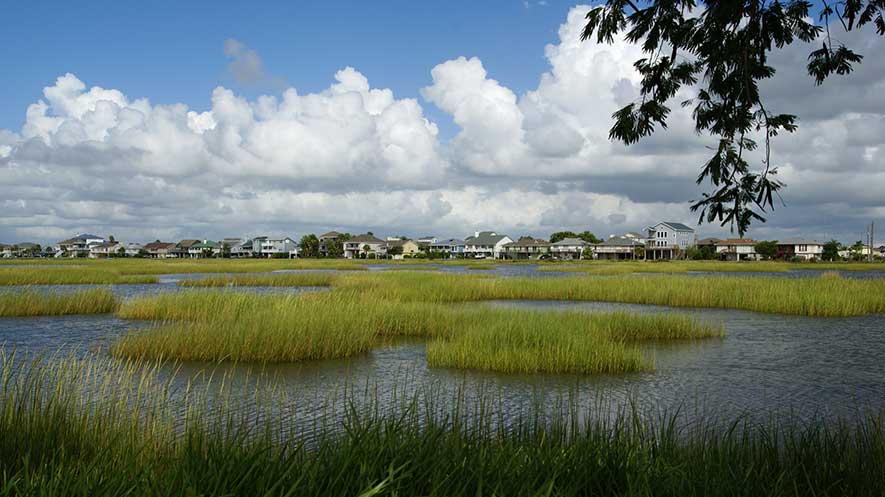Hurricanes Harvey and Irma were, and continue to be, life-changing events for millions of Americans. These coastal storms brought devastation far beyond waterfront homes, reminding us that the coastal flood zone can range miles inland.
As communities throughout the impacted coastal zone begin to recover and rebuild, their focus should be on building back better and smarter than before – ensuring the next storm will do less damage and people in a storm’s path will be better able to cope. This means building resilient communities and using natural coastal infrastructure – beaches, dunes and wetlands – to reduce flood risk.
While local coastal managers are still assessing damage, we are again seeing that natural coastal infrastructure did its job – beaches, dunes and wetlands protected property and lives at the expense of displaced sand and eroded coastlines. Following Hurricane Sandy, federal beach and dune projects were determined to have prevented $1.9 billion in damages and coastal wetlands prevented $625 million in damages. We expect Florida and Texas towns and counties that maintained wide beaches and high dunes to have less direct damage than those whose coastline was allowed to deteriorate.
Beaches, dunes and wetlands are the first line of defense against storm surge and coastal storm damage, but coastal flood and storm protection takes multiple lines of defense. During Hurricanes Harvey and Irma, evacuations saved lives, elevated homes saved property, and coastal research and modeling led to forecasts that gave people time to prepare. All coastal communities should have emergency management plans, proper zoning and regulations for building in flood zones. The federal government can support communities by funding coastal storm and flood risk reduction projects, ensuring the National Flood Insurance Program doesn’t incentivize risky building practices and by investing in coastal research, data collection, modeling and forecasting.
As Texas and Florida communities recover with federal support, resilience must go beyond the shoreline. In Hurricane Harvey, inland flooding from excessive rain was far more destructive than the initial storm surge, so resilience planning must be systemic and watershed-based. Bayside flooding in both Harvey and Irma was as destructive as oceanfront flooding. Proper planning – including wetland and bay beach restoration, storm-sensitive building codes and beneficially using navigation channel sediment – can reduce this risk.
As seas rise and coastal storms intensify, post-storm restoration must be looked at systemically and with the goal of increasing resilience throughout the watershed. Federal support will be necessary to help local communities while ensuring efficient and systemic recovery and restoration that decreases future risk, not just piecemeal rebuilding. The federal government should provide funding to restore and rebuild, and should help communities become better prepared for the next storm, by promoting resilience and investment in natural coastal infrastructure such as beaches, dunes and wetlands.
By: Derek Brockbank, Executive Director of American Shore and Beach Preservation Association (ASBPA)





